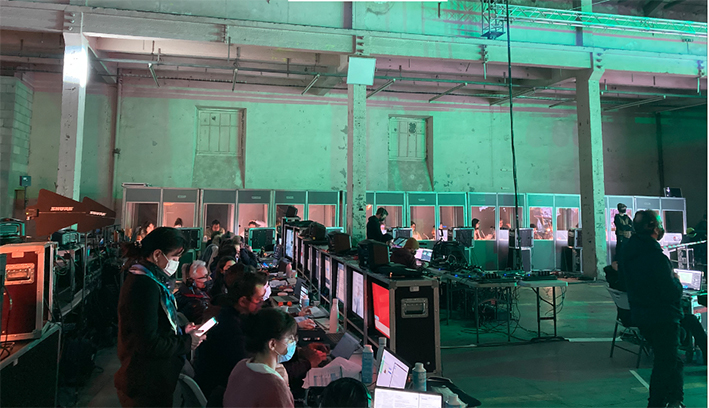The Art and Challenges of Simultaneous Interpretation
Simultaneous interpretation is one of the most complex and fascinating skills in the field of translation and interpreting. It requires the interpreter to listen and render the message in another language almost at the same time, with only a few seconds’ delay. This real-time process is widely used in international conferences, political meetings, and high-level negotiations where every second counts.
What Makes Simultaneous Interpretation Unique?
Unlike consecutive interpreting, where the speaker pauses to allow the professional interpreter to translate, simultaneous interpreting flows without interruption. This seamless delivery is made possible thanks to specialized equipment: interpreters work in soundproof booths, wear headsets, and use microphones to ensure accuracy and clarity. The audience, equipped with headphones, hears the interpretation instantly.
This mode of interpreting has the advantage of saving time and ensuring smooth communication in multilingual settings. It also allows large international audiences to follow discussions in their own language without slowing down the event.
The Challenges Behind the Skill
Despite its advantages, simultaneous interpretation is demanding both mentally and physically. Interpreters must process speech at a fast pace, anticipate what the speaker will say, and reformulate the message in real time. Stress levels are high, especially when speakers talk too quickly, use technical terms, or have strong accents. This is why interpreters usually work in pairs, switching every 20–30 minutes to avoid fatigue.
The job also requires excellent concentration, cultural knowledge, quick reflexes, and the ability to “split attention”—listening and speaking at the same time. For organizers, simultaneous interpreting can be more expensive than other modes because it involves specialized equipment and at least two interpreters per booth.
Cognitive Demands and Anticipation
Beyond linguistic knowledge, simultaneous interpreting relies heavily on cognitive skills. Interpreters must manage what researchers call “split attention”—listening and speaking simultaneously, while also monitoring tone, terminology, and accuracy. This constant juggling requires years of training and practice.
A key skill is anticipation. Experienced interpreters learn to predict what the speaker will say next by relying on context, familiar sentence structures, and their own subject knowledge. This technique, also known as probabilistic forecasting, helps them stay ahead of the speaker and reduces the risk of getting lost when complex or unexpected information arises.
For instance, when a speaker begins a familiar expression or a list, the interpreter often knows what is coming and can prepare mentally. This predictive ability, combined with strong memory and fast reflexes, allows interpreters to keep pace with demanding speeches.
The Human Factor
Technical skill is only part of the equation. The human side of interpreting is just as important. Interpreters must remain calm under pressure, manage stress, and adapt quickly to changes in tone or register. They often deal with sensitive or high-stakes situations where accuracy and neutrality are essential.
In addition, physical and mental endurance play a significant role. Working in a booth for hours, processing continuous streams of speech, and maintaining focus without distraction demand strong discipline and resilience. Interpreters must also cultivate teamwork, since collaboration with booth partners is crucial for smooth performance.
Relay Interpreting in simultaneous interpretation
At major international conferences, it is common to encounter dozens of languages spoken by delegates. In such cases, it is not always possible to provide direct interpreting for every language pair. This is where relay interpreting comes into play.
In relay mode, one interpreter translates the original speech into a widely understood “pivot” language, such as English or French. Other interpreters in the booths then listen to this version and interpret it into their own target languages for their audiences. For example, a speech in Japanese might first be interpreted into English, and from there into Spanish, Arabic, or Russian.
While relay interpreting ensures that every participant can follow the discussion, it also introduces an extra layer of complexity. The process is slightly slower, and the risk of inaccuracies can increase because each step depends on the quality of the previous interpretation. Nevertheless, it remains an indispensable solution for large multilingual events where direct interpreting is not feasible.
Advantages of Simultaneous Interpretation
The benefits of simultaneous interpretation explain why it is the preferred mode at international events. First, it allows uninterrupted communication: the speaker does not have to pause, and the message flows as if delivered directly in the listener’s language. This creates a more natural experience for participants.
Second, it makes large multilingual events possible. A single speech can be interpreted simultaneously into several languages, ensuring that all participants—regardless of their linguistic background, have equal access to the content. This inclusivity is vital for global cooperation in politics, science, and culture.
Finally, simultaneous interpreting saves time. In settings like the European Union or the United Nations, where multiple languages are used, consecutive interpreting would double or triple the length of meetings. Simultaneous interpreting keeps events efficient and dynamic.
Disadvantages and Practical Constraints
Of course, there are challenges for organizers as well. Simultaneous interpretation is more expensive than consecutive interpreting because it requires specialized equipment and at least two interpreters per language pair. Booths, headsets, and audio systems must be set up in advance, which adds to the logistical complexity.
In terms of content, some loss of information is almost inevitable. Because interpreters must keep up with the speaker, they sometimes need to compress or simplify certain details. High stress levels, complex terminology, or unclear delivery from the speaker can all affect accuracy. This is why preparation is so important: interpreters often study background materials, terminology lists, and even draft speeches beforehand to ensure the highest possible quality.
Conclusion
Simultaneous interpretation is both an art and a science. It combines linguistic mastery, quick thinking, and deep concentration with the ability to remain calm under pressure. While it poses significant challenges—fast speech, mental fatigue, technical demands—the rewards are just as great. It enables people from around the world to exchange ideas, negotiate agreements, and share knowledge without barriers.
In today’s interconnected world, simultaneous interpreting is not just a technical service but a bridge across cultures and languages. Behind every international summit, global conference, or high-level negotiation, professional interpreters are working tirelessly in their booths, ensuring that communication flows seamlessly. Their work is often invisible, but its impact is truly invaluable.








